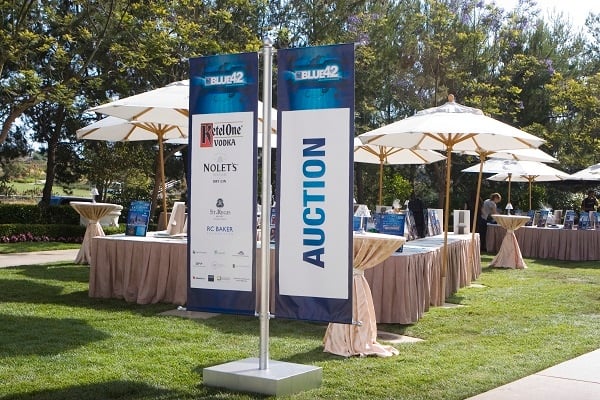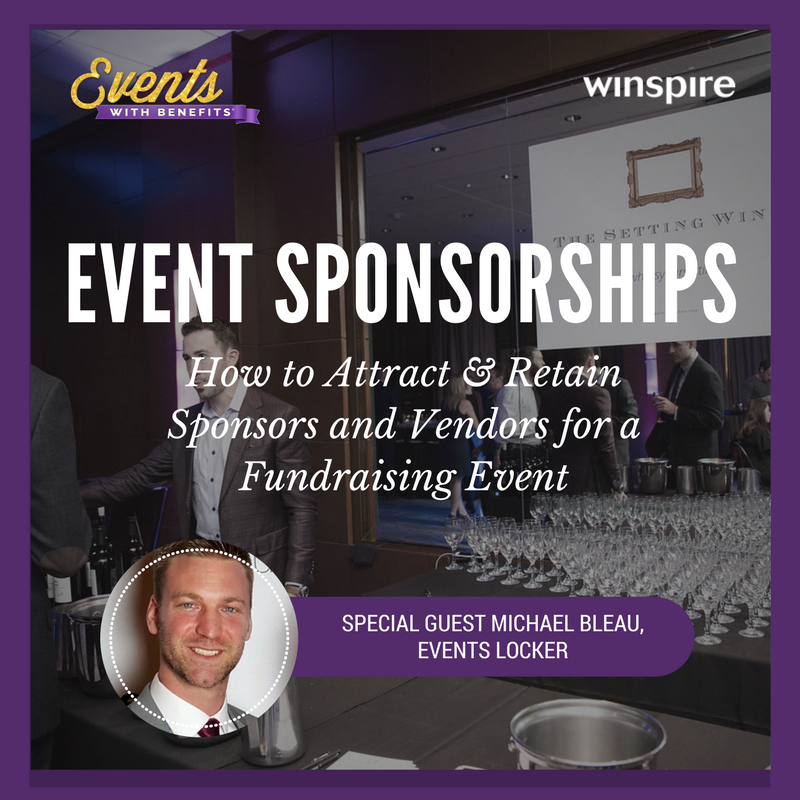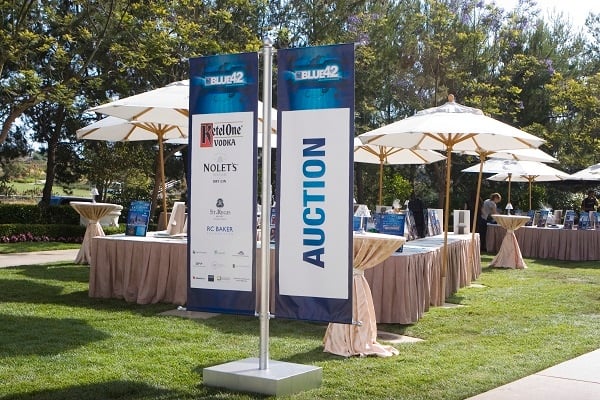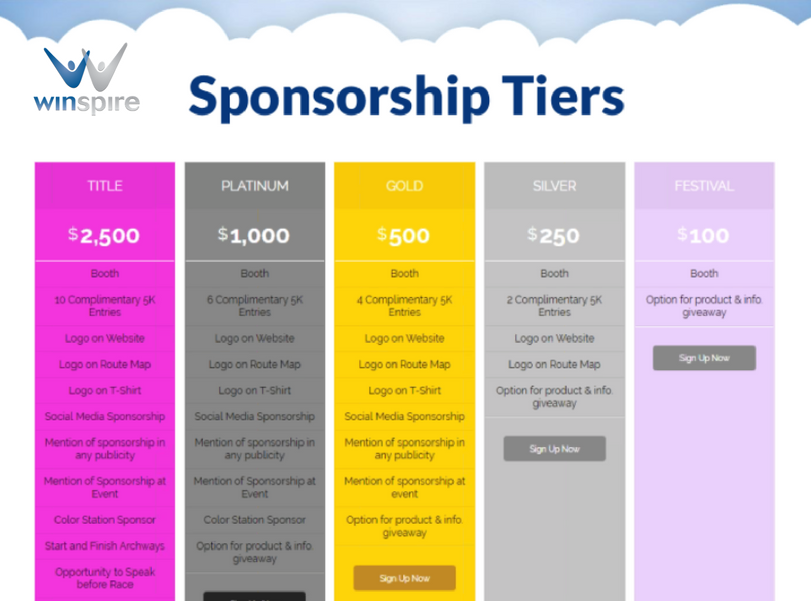You already know event sponsorships cover costs, boost revenue and lay the foundation for long-term partnerships.
If you’re considering offering table or booth space for sponsors at an upcoming event, or already have vendors lined up, you’ll want to check out today’s post.
We’re joined by Michael Bleau, co-founder and CEO of Events Locker, a platform connecting vendors to events. In a recent episode of our podcast Events with Benefits, Bleau shared tips for organizations seeking to increase their revenue through strategic event sponsorships.Learn:
- What sponsors are looking for when considering events
- Examples of win-win sponsor-event partnerships
- Best ways for nonprofits to obtain low-hanging fruit
- Which event types are losing steam, and which are growing in popularity
1. What are potential corporate sponsors looking for?
Vendors often already have an idea of events they want to go to. What they factor in: attendance goals, geographic markets, and audience demographics.
For example, an ice cream brand may want to go after specific demographics, like family-oriented moms. If it’s a premium brand, they’ll target higher incomes. They may also have targeting goals. So if they want to hand out 5,000 samples a day, an event with 1,000 participants is not the right fit.
As far as sponsorship packages, sponsors are more and more interested in getting some sort of social media tie-in. You might post a logo and call-to-action on Facebook and Instagram, or sending an email blast featuring key sponsors. Before, that was a nice throw-in; now we see brands building campaigns around that.
One example: We have a grass-fed yogurt drink client that’s launching a new brand. While they’re doing a marketing sampling tour with us, they have coordinated a mom’s blogger campaign as well. They’re looking for specific social media outreach that supports that program.
2. How can nonprofits reach out to sponsors strategically?
My advice: Go after the low-hanging fruit. We’ve found nonprofits have the most success mining their local networks, contacts and businesses for support. If you go after major brands and call for $10,000 or $20,000 sponsorships, you will get resistance – especially if the event hasn’t had a proven track record of attendance for several years, or if there’s not a big professional production company backing it.
So go local, and find companies that align with your nonprofit organization and mission. You’ll find a lot more enthusiasm and willingness to donate or sponsor, not just from a marketing standpoint but from a vision standpoint.
That said, it is still possible to make your event more marketable to broader sponsorship audiences. What you’ll need:
- Compelling media. Start building a stable of great photography and great videography. You need a ‘sizzle reel’ or hero shots of the event. These are nice wide shots showing the crowd and attendance.
- Accurate attendance and demographic information.
- Accurate media spend info. How much are sponsors going to receive in paid or gifted advertising? What’s the number of people in your social media audience or email database? What’s the dollar value of that? All these things factor into the worth of corporate sponsorships.
{{cta(‘f2a7ad66-bc37-4f6f-ac57-1560c652588b’,’justifycenter’)}}
3. What’s the best way to showcase these assets to potential sponsors?
Create a showcase page for your event. You can do this on your own website, but here’s a quick summary of how we do it on Events Locker.
On our platform, you can upload a wide cover shot, similar to a Facebook cover photo, or video links. We have a marketing statistics grid to plug in your social media numbers, which creates a 1-page digital listing sheet and 3-D pie charts that look very professional. Best of all, the entire page is very mobile friendly.
In the past, event organizers would take hours, days and weeks to generate elaborate, 10MB PDF sponsorship packets that couldn’t even be opened in email or mobile. Instead of that, you now have a handy link to send out where sponsors can easily book or message you for more information.
4. What events are on the up-and-up, and which are on the decline?
We probably book somewhere around 200 booths a year nationwide for different clients, and some patterns have emerged.
- Fun Runs (mud runs, color runs, bubble runs) have grown in competition over the last few years. Whereas it used to be ‘the thing to do’, attendance has dwindled, so it’s a harder sell than it used to be. Sponsors have picked up on that and are being very targeted as to which races they’re going after. That said, one of my favorite events is the Color & Motion 5k Series. It’s a great time and gets crowds of millennials. So if that’s your type of event, it’s really important to put your best foot forward. Have striking pictures and video to back up your attendance numbers.{{cta(’45a90fcc-525f-4637-b1cf-564f62722db1′,’justifycenter’)}}
- Music and Concert events seem to always be popular. One example is the Doheny Blues Festival in Orange County, California. That’s a great mega-event.
- Food & Wine Festivals (like the Newport Mansions Wine & Food Festival in Rhode Island) are growing in popularity. People are getting more sophisticated about the food options out there and want to experience food as a cultural phenomenon.
- Sports event integrations have a higher price point of entry, but sporting events – not just professional but also regional and local sport tournaments – are good opportunities with a lot of room for growth.
- Family block parties are typically a hit.
With any of these types of events, there are hits and misses. I just love any professionally-run event that has high energy and good entertainment. You know what you’re getting as both a consumer and vendor, and you feel like you’re taken care of.
5. How can we make sure sponsors are satisfied with the experience and return next year?
First, structure your booths in a way that maximizes attendance. Target your foot traffic design so sponsors get the major flow of foot traffic and are not sitting on the peripheral. This is especially true for vendors that are paying a premium for a good spot. If a vendor pays $5,000 for a 10×10 booth and ends up on the peripheral and get 5% of the foot traffic, they will have a bad experience and be very upset.
Additionally, don’t neglect the low-hanging fruit. Often, organizations will try to jam commercial brands into a large-tier sponsorship package. Just because it’s a commercial brand doesn’t mean they have $5,000 or $10,000 to commit to a full-on sponsorship. They’re pigeonholed into certain budgets too. Many times they just want a premium booth spot.
If a sponsor approaches you for a commercial booth spot, you can charge them a premium for that spot, but don’t feel like you have to force them into a full sponsorship package. They’ll pass out their collateral, they’ll be satisfied, and you’ll get more revenue.
6. What are the key components of successful event?
First and foremost, create a great product that consumers – your attendees – are going to enjoy and want to stay the full length of the event.
Second, pull in enough people to reach your target attendance. Everything is built around expected attendance. If you get too few attendees, your event will look empty, and guests and vendors will feel like they’re doing something wrong. If you get too many people, it’s going to be chaotic and create potential liability issues. So estimating attendance accurately is key.
Third, build out a robust sponsorship program that will help you meet your fundraising goals.
7. Could a professional sponsorship management system like Event Locker help your event?
As long as the event has at least a dozen onsite vendor booths and sponsors, it could benefit from professional services.
We work with everyone from volunteer groups, the local Chamber of Commerce and farmers’ markets with 1 event, all the way up to major marathons, color runs, mud runs, obstacle course runs, and events with hundreds of events in every major city and state. We work with eclectic music festivals, once-a-year mom and pop barbecue festivals… our clientele runs the gamut.
What are your services?
A nonprofit would do the starter or basic plan, depending on how many events they have per year. We help you manage vendors that apply for the event. Our events are also searchable. We have thousands of marketers and vendors using our site who can keyword search to find events that match their goals.
Case Study
The Imagine Yoga & Music Festival in Malibu, Calif. is a charity festival that’s completely volunteer run. They target 2,000 to 3,000 attendees annually and put on a large vendor village with 60-70 vendors.
The first year they ran it, they were using a hodgepodge of Google Sheets and paper applications, while a committee of volunteers tried to manage the vendors. As anyone knows who runs an event, the process can get really chaotic. The month leading up to the festival, you’re trying to get certificates of insurance, health permits and payments; the day-of, vendors are coming in to do onsite setup and load-in. Talk about stressful.
The next year, using Events Locker helped streamline the process. We cover logistics and payments, help create that showcase page, plus make it easy for vendors and sponsors to pay the organization directly through PayPal. (I should note that cash flow such a big part of operations up front. Getting that money ahead of time, instead of after, is key.) Events Locker also kept track of essential required permits and got the event approved by the National Park Service, where the event was held, so fewer vendors were dropped due to incomplete or missing paperwork.
All told, organizers estimated saving over 100 hours in producing the event.
To learn more about the services of Events Locker, visit https://www.eventslocker.com. They recently introduced a starter plan for single events, plus offer a 15% nonprofit discount.
Hear the rest on Events with Benefits
You won’t want to miss the rest of Bleau’s invaluable advice and best practices for working with event sponsors and vendors.
Listen to the podcast episode below, or visit the full site here.
{{cta(‘639b168b-df3f-4dd6-b2ef-ae20cd598be3′,’justifycenter’)}}



